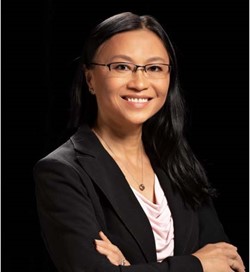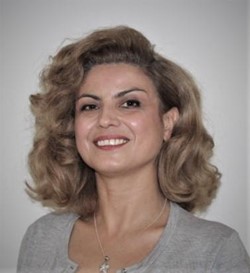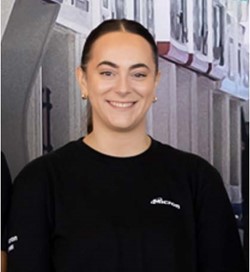
It’s a well documented fact that men outnumber women in technology fields by a large margin. In the semiconductor industry overall, women account for 20-25% of employees. Micron is committed to recruiting and retaining a diverse talent pool and is proud to report that women represent 31% of its global workforce.
“At Micron, we know diversity is a strength,” said Scott DeBoer, EVP of Technology and Products. “It’s embedded in the way we do business and drives our innovation and our ability to remain a technology leader in the semiconductor industry.”
With 2,000 jobs coming to Boise as a result of the new $15 billion memory fab, more women and people from other underrepresented groups are needed to meet the future workforce demands. As a recent Accenture report noted, semiconductor companies have the “clear opportunity to help narrow the existing and pervasive gender gap and unlock the value that women can provide.”
Micron is proactively removing barriers so women can fully engage in the workforce. In June, the company broke ground on a childcare center across the street from its Boise headquarters to provide accessible, affordable, high-quality options for employees. The company also facilitates mentorship, allies and support through the Micron Women’s Leadership Network, Women Innovate, and Technical leadership Program.
Wondering what it’s like to be a woman in the fast-moving field of driving leading-edge memory and storage solutions? Hear from four female Micron employees in their own words about what drew them to Micron, the opportunities and challenges of working in the semiconductor industry, and what advice they would give to those interested in entering the field.

THY TRAN - VP, Global Front-End Procurement
How long have you worked at Micron?
Nearly 15 years.
What does your position entail?
I oversee Micron’s Front-end expenditures and cost-saving efforts that directly impact semiconductor device technology development and manufacturing.
How did you get interested in the technology field?
I was interested in math, science and art, but opted for engineering because it was a practical way to learn the fundamentals and the best way to earn scholarships. We were first-generation immigrants and did not have the means to pay for college tuition. I took a semiconductor class, which sparked my interest in an internship at IBM. What began as a practical choice led to an incredible adventure in the semiconductor industry. As an electrical engineer working on Logic, SRAM, and DRAM technologies, I found my groove. It became a passion rather than just a way to make a living.
What training did you get to bring you to this point?
My IBM internship, electrical engineering labs, and on-the-job training provided a fundamental technical skillset. I’ve continued honing my craft as a technical contributor and technological leader. Training such as project management, leadership, and cultural awareness provided a broader toolkit to take on different roles and responsibilities. Micron also provided numerous executive leadership training opportunities, including executive training, the Stanford Graduate School of Business’s Executive Program, and the McKinsey Executive Leadership program.
What are the challenges and opportunities as a woman in the semiconductor industry?
Project and promotion opportunities were not always equitable. Early in my career, I encountered gender bias, but have also benefited from the strong advocacy of male allies. Finding work-life balance and raising a family was incredibly challenging, due to long work hours and travel. Even with my husband’s strong support, being away from family was difficult. The semiconductor industry is competitive, fast-paced and ever-changing. You must give it your all to excel and continue learning and growing.
What advice would you give to students or career changers interested in the technology field on how to prepare for a career in the industry?
Technology is where it’s at! The field is broad and deep enough to accommodate multiple disciplines and offers limitless opportunities and flexibility. It provides the building blocks for math, science, and fundamental skill sets to pave the path for just about any career. I feel so fortunate to have landed in the technology arena, which has fueled my career and personal growth for nearly three decades.

ARZUM SIMSEK-EGE - Distinguished Member of Technical Staff, DRAM Technology Pathfinding Process Integration
How long have you worked at Micron?
Almost 10 years.
What does your position entail?
I am a director-level technical contributor and work on technology pathfinding. I am also one of Micron’s most prolific inventors with around 150 patents.
How did you get interested in the technology field?
Growing up, people told me engineering is a man’s field. I was curious enough to find out why and took it as a challenge. I am fascinated with science and technology. The more I learned, the more I dared.
What training did you get to bring you to this point?
I have two master’s degrees and a PhD, and there is still much to learn.
What are the challenges and opportunities as a woman in the semiconductor industry?
Over 23 years in the industry, I have been looked down upon, underestimated, and excluded many times. Awareness and allies make the difference. Opportunities are always available by going the extra mile, putting myself out there, and trying my best.
What advice would you give to students or career changers interested in the technology field on preparing for a career in the industry?
Pick a technology field you enjoy and success will be inevitable. A career is a journey; you can change the path from one technical field to another. I started with chemistry, moved to biomaterials and environmental studies, and ended up in semiconductors. At Micron, I found the opportunity to apply my interdisciplinary background to many innovations and products.

ALYSSA SCARBROUGH - Senior Engineer, Wet Process
How long have you worked at Micron?
5 years
What does your position entail?
I guide a group of highly skilled engineers to help understand and improve semiconductor device functionality, explore new process technologies to address future technology gaps and tackle day-to-day problems with innovative solutions.
How did you get interested in the technology field?
I received my degree in organic materials chemistry, where I could design and synthesize molecules to exhibit specific material properties. This “imagination to realization” concept fascinated me and drove me to seek similar opportunities after grad school, which led me to Micron.
What training did you get to bring you to this point?
I have a B.S. in general chemistry, a PhD in materials science and wet chemical engineering experience. After 4+ years at Micron, I transitioned into my current role, process integration.
What are the challenges and opportunities as a woman in the semiconductor industry?
My biggest challenge is maintaining a work-life balance. I love my work and will often get so excited about a project that I work overtime to obtain results. This can overlap with family time, and I constantly remind myself to spend more quality time with family.
What advice would you give to students or career changers interested in the technology field on preparing for a career in the industry?
If you are open to change and interested in science, innovation, and the future of technology, then Micron is a great place to work.

GABY BRODEN - Senior Supervisor and Mosaic ERG Co-lead
How long have you worked at Micron?
3 years
What does your position entail?
I am a Senior Shift Supervisor for the research and development fab. My team and I work on automation or improvement projects. We manage wafers moving through our area, looking for inefficiencies or blockages and making them more efficient. I also lead strategic efforts for my area, people management, and team development.
How did you get interested in the technology field?
I have never considered myself a “techy” person. While in school, a professor recommended me to Micron recruiters, and I interviewed to have post-graduation options. I took a position at Micron in 2020 and ended up loving it. What I didn’t realize was the number of opportunities for driven individuals within technology. Since technology is so innovation dependent, I have had more funding, support, and recognition for my projects than I would have at other companies. In only three years, I have earned three promotions. I appreciate the flexibility and fast-paced environment within technological companies. The job evolves quickly with new needs and demands yet still feels familiar and manageable, making things more exciting.
What training did you get to bring you to this point?
I studied Operations Management and Spanish and am pursuing a master's in Operations Management that Micron is paying for. Micron offers many internal training programs to prepare you for your job. We had orientation, a boot camp to introduce us to the new software, then 4-6 months of on-the-job training with a mentor who taught us the basics of our position. Now as a more established employee, there is a lot of focus on personal development and freedom to decide how I want to evolve. An entire internal department dedicated to workforce development provides courses and training for nearly any topic.
What are the challenges and opportunities as a woman in the semiconductor industry?
Representation is important and not always available in fields like STEM and I want to be a good role model for other young Latina women like me. Often I am the only woman in the room. As a leader, this can be challenging at times, but it also allows me to stand out for my contributions and unique ideas. Micron’s focus on recruiting, attracting, and retaining diverse talent has shifted the culture to be more open-minded and inclusive.
What advice would you give to students or career changers interested in the technology field on preparing for a career in the industry?
Don’t discount your previous experience. When I applied for positions in college, my previous summer experience at a plywood plant exposed me to many manufacturing elements I still use in my current job. The biggest thing I've learned in technology is that you don't have to know the intricacies of what technology you are working on to be an influential contributor within the company. Sometimes, other skills are more valuable to a position.